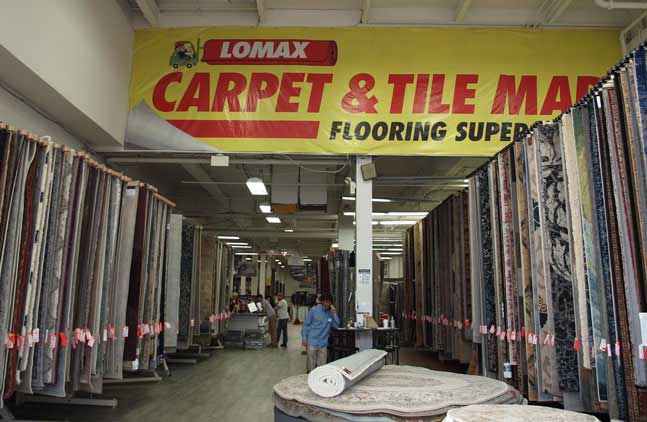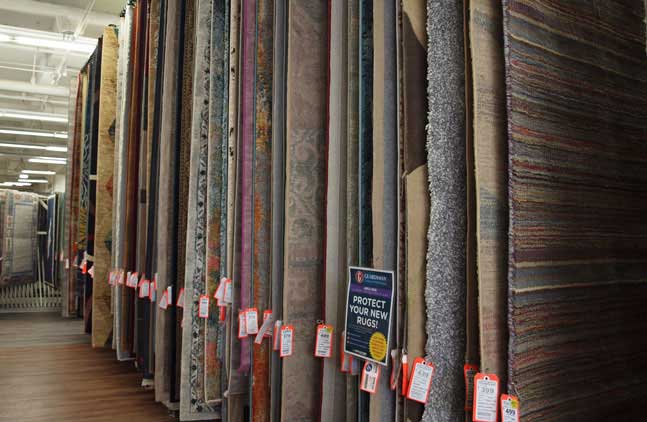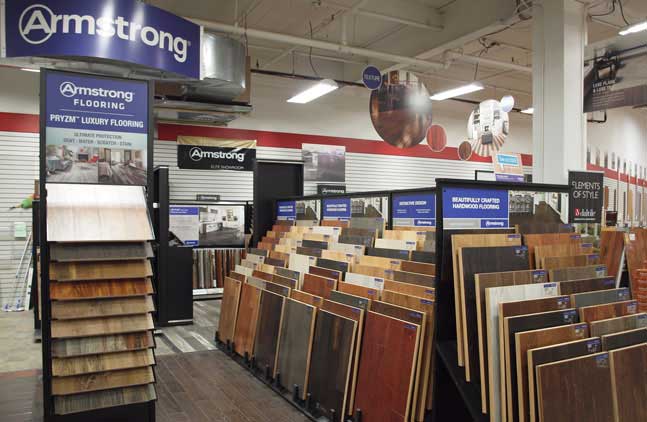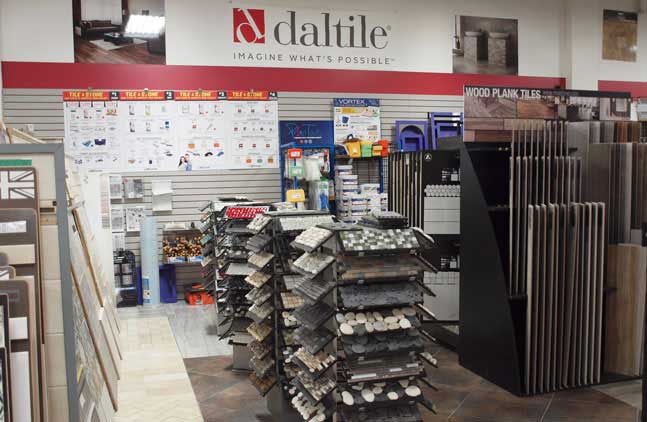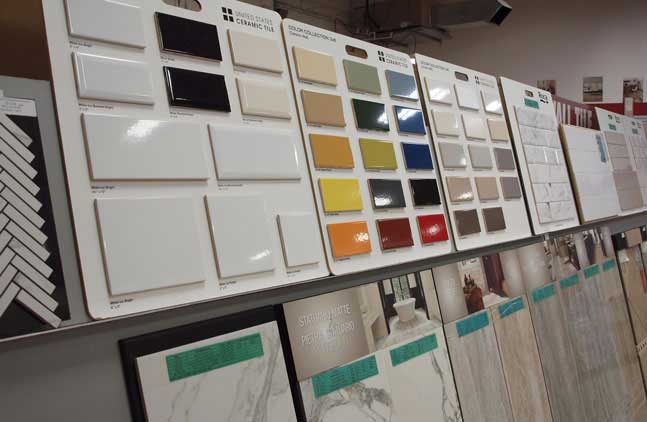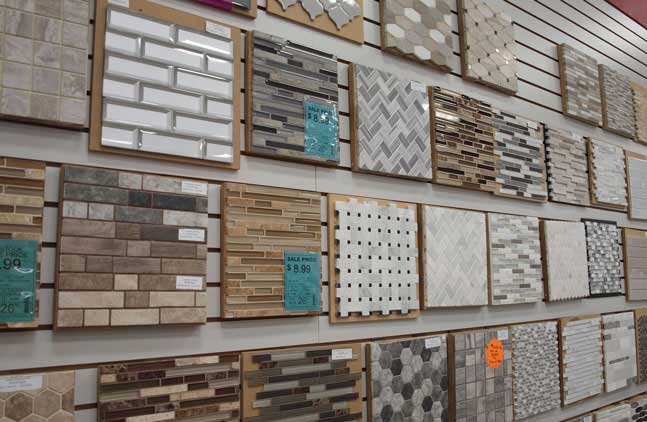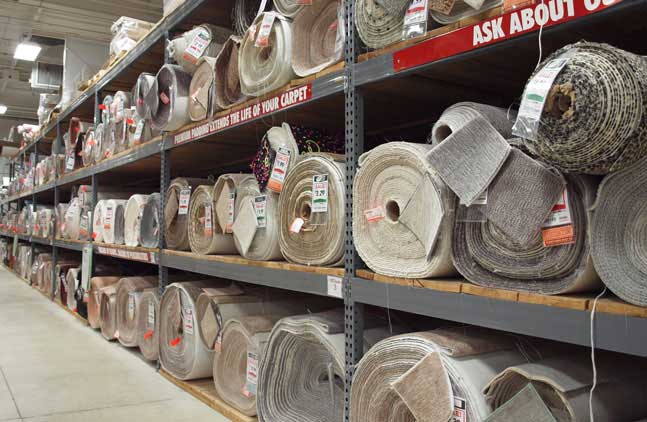Though cozy carpet floors look great in certain rooms of your home, there are places that would benefit from moisture-resistant flooring instead. Your silk carpet flooring may look amazing in the living room, but a different type of flooring can be beneficial in water-prone places like the bathroom. Tile is an elegant and easy-to-maintain choice for rooms that experience a lot of moisture.
With such a significant difference in flooring types like carpet and tile, you may be wondering how to transition between them smoothly without any difference in aesthetics or floor height. Fortunately, there are simple solutions to ensure that carpet and tile flooring flow evenly.
We'll explain how transition strips work to make a carpet-to-tile transition functional and aesthetically pleasing. We'll also go over design tips and popular flooring options to ensure your space flows between multiple flooring transitions.
Why Transition Between Carpet and Tile?
Different rooms have different purposes. For example, plush carpeting may not be the ideal choice for places that experience a lot of foot traffic, moisture or stains. However, tile flooring is perfect for places like the bathroom, kitchen, entryway or mudroom because of its durability and easy maintenance. While you're unlikely to find carpeting in the bathroom, many living rooms and bedrooms have this type of flooring because of its comfort, noise reduction and affordability.
Because homes have different rooms with unique purposes, it's likely that you'll need to find a way to transition from carpet to tile in certain spaces. Luckily, transition spaces don't have to disrupt the flow or aesthetics of your home when you properly prepare and choose the right flooring options. You'll need to prepare for this transition in your home by choosing complementary flooring options and utilizing transition strips when necessary.
Carpet-to-Tile Transition Options
There are numerous ways you can install a carpet-to-tile transition. Some methods work better in certain scenarios than others — it depends on what you have or plan to do.
1. Tuck-In Method
The tuck-in method is a commonly used option — and you've probably seen it countless times before. This method is where you tuck the edge of the carpet into where it meets the tile. It's best used if there are already tiles installed. It's also one of the carpet-to-tile transitions without strip options.
To use this method, all you'll need is a transition strip and a knee kicker. When you install this strip, ensure it's about a quarter inch from the tile's edge. Cut the carpet's edge so it meets perfectly with the tile's edge. Use a knee kicker to help pull the carpet over the tile, then take the extra edge of the carpet you just pulled and tuck it under the gap. Use the transition strip's hooks to hold the carpet in place.
2. Z-Bar Transition
Next up is the Z-bar transition, which is also a popular option. This method uses a transition bar with a Z shape. The bar's shape helps to tuck and hide the carpet's edges under the tile. The result is a smooth transition between the carpet and the tile, lowering your risk of accidentally pulling the carpet out.
Note that the Z-bar method may be best in scenarios where the carpets are installed before the tiles. Because the carpet will already be tucked in, a Z-bar transition adds an extra layer of security.
3. Reducer Strip
The reducer strip takes a different approach from the methods above. Instead of tucking one material under the other, this method locks them together. Reducer strips are typically smooth with rounded surfaces. They act like a little bridge between the carpet and the tile.
It's a fairly cost-effective and simple carpet-to-tile transition method. You need a narrow, empty space between the two materials. In this space, you'll install the reducer strip, using either glue or nails to keep the materials together. These strips can come in various colors and materials for extra customization.

What Are Tile Transition Strips?
Transition strips can be made of wood or metal and are installed where two different flooring materials meet. This strip closes any gaps between materials, offers leveling between varying heights and signals a visual break in the flooring types. Because there are multiple flooring types throughout a home, a transition strip's design is perfect for helping with each space's flow and functionality.
Why Should You Use Transition Strips When Planning a Carpet to Tile Space?
A carpet-to-tile transition strip is often used to bridge the gap between materials when joining any flooring type. In cases of similar hardwood flooring, transition strips allow for expansion and contraction. When joining different floorings, like tile and carpeting, the transition strip provides a visual break between the differing materials. The transition strip serves as a visual cue for people to adjust their steps.
The transition strip also serves a functional purpose when joining together materials of varying heights. People who have trouble walking, especially small kids or the elderly, might trip over the small height difference of a carpet-to-tile transition. A transition strip will help to level any steep height inclines so that it's safe to walk.
What Are the Different Types of Transitions Strips?
There are several different types of transition strips available depending on the flooring type. They include the following:
- Carpet edge gripper: For a carpet-to-tile transition, you'll need to use one with a carpet edge gripper. This aluminum strip has sharp teeth that grip the underside of the carpet, holding it in place next to the tile.
- Z-bar: The Z-bar is a common transition strip for a carpet-to-tile transition. This option hides the carpet edges underneath the tile, so you won't have to worry about the edges of the carpet being lifted up or frayed.
- Reducer strip: Another popular transition strip for this type of project is a reducer. With this method, you'll secure the carpet and tile together using nails or glue. It's also one of the best options to help with leveling, as tile and carpeting often have significant differences in height.
A professional installer can outfit your transition space with the most appropriate transition strip, depending on your flooring type. However, if you're interested in DIYing your home's flooring and want to use a transition strip, reducer transition strips usually work well to keep the carpet in place.
How Do You Create a Stylish Transition Between Carpet and Tile Spaces?
Though transition strips are important in the overall functionality and aesthetics of transitional flooring spaces, there are other design elements you should consider when planning your home. Whether you're looking to keep your space bright and open or you want to create cozy, distinct living areas, you can create a well-designed home with multiple types of flooring.
We'll discuss some helpful tips for planning the interior design of your home.
1. Create a Tile Accent Border
If you want to create a unique and distinctive separation between tile and carpeting spaces, consider creating a tile accent border. This option will give your space a more upscale look than using a plastic or metal transition strip.
If you want the border to be noticeable, you can use different tiles to create more distinction. However, if you prefer a more subtle look, you should use the same tiles as the rest of the flooring.
2. Use Strategically Placed Rugs
Another option to help bridge the style gap between tile and carpet is to place overlapping rugs. By placing rugs where the two floors meet, you can tie together the two spaces more easily.
A simple way to do this is to choose a rug with intricate patterns but similar colors and undertones as the tile and carpet. You can also opt for neutral carpet and tile colors and then place colorful rugs over them.
3. Consider the Décor of the Entire Space
After you've decided on your carpet and tile flooring, you should consider the space's décor. In an open-concept space, you should consider design and style elements that will tie the rooms together. Sticking to neutral paint colors is a smart choice, as they will provide a backdrop that works for the flow of the rooms.
You should also consider the furniture of the spaces. Dark living room furniture will not flow stylistically well with an all-white kitchen. If you opt for a light color scheme, it's better to stick with that throughout the transition spaces, including furniture.
4. Use Complementary Colors Rather Than Matching Ones
With tile and carpet, it can be a challenge to get the exact shade as each other. Similar shades also do not provide enough visual contrast between the spaces, which can lead to a lackluster design.
Similarly, stark color contrasts can also lead to poor aesthetics, especially in open-concept spaces. So, it's best to choose carpet and tile options that are complementary but not the same shade.
What Are Some Popular Flooring Choices for Carpet-to-Tile Transition Spaces?
It's important to plan ahead when thinking about replacing your flooring. If you're replacing flooring in a transitional area, it's a good idea to replace the flooring in multiple areas to ensure that it flows well together.
Some of the most common places that homeowners install carpet-to-tile transitions are in the kitchen and living room, the hallway and bathroom, and the bathroom and bedroom. These places benefit from specific types of flooring, so you should try to anticipate how you will update your home with multiple types of flooring before beginning your renovation projects.
Kitchen to Living Room
Most kitchens benefit from moisture-resistant, durable and easy-to-maintain flooring. Tile is a popular choice for kitchens, as any water or food spills can be easily cleaned up without leaving a stain. Many homeowners prefer the warmth and comfort of carpeting in living rooms. With these floor plans, you may have to create a living room carpet-to-tile transition to get both of the flooring options that you want.
If you're looking for floor tile in the kitchen, light-colored ceramic tile is a good option. Ceramic is particularly beneficial in kitchens as it doesn't lose its color, is durable under high heat and is water-resistant. For the living room, you should try to find complementary colors to the beige of the tile. Dark-colored carpeting complements the tile while still providing enough contrast between the two flooring types.
Hallway to Bathroom
For hallways, it's important to pick out a type of flooring that is durable enough to handle a lot of foot traffic, while also remaining easy to clean. Also, with second-floor hallways, you'll want to choose an option that minimizes noise.
Hardwood and tile flooring tend to be quite loud, but carpeting provides noise reduction, so it tends to be preferred on the second level of the home. However, carpeting doesn't work well in bathrooms. So, using hard surface flooring becomes a necessity in this area of the home. For bathrooms that lead off the hallway, you'll have to consider how to transition from the carpeted hallway to the tiled bathroom.
For carpeting options that are easy to maintain and hide the effects of foot traffic well, consider a gray patterned option. The dark color hides discoloration well, and the square pattern hides foot traffic imprints. For a bathroom tile that complements this look, consider cool or neutral colors to complement the gray. Porcelain floor tile is a great choice for a flowing transition from the hallway to the bathroom. The silver and gray undertones complement the dark gray of the carpet without trying to match too closely.
Bathroom to Bedroom
Numerous homeowners choose carpeting options in their bedrooms because of their affordability, noise reduction capabilities, comfort and added insulation for cold nights. However, for bathrooms leading off of bedrooms, the most preferred flooring material is tile. Like other carpet-to-tile transitions, choosing complementary colors is a good way to ensure that rooms flow well together.
Carpeting is often chosen for bedrooms based on its softness and plushness. Light-colored carpeting is perfect for bedrooms, as it's one of the most comfortable carpeting options available. For bathrooms located off plush carpeted bedrooms, you might want to consider more of a color contrast between the two flooring types.
Since the flooring textures are so different, a visual break is a smart design choice to signal a change in flooring. You might consider a darker neutral, like dark porcelain, to complement and provide contrast to the white carpet.
How to Address Uneven Carpet and Tile for Transitions
Sometimes, carpet and tile have different heights, which can lead to uneven transitions. This is especially the case when your home has a concrete subfloor or when it already has an extra layer of plywood.
Regardless of what caused the uneven carpet-to-tile transition, the solution will be one of the following:
- Make the transition as even as possible, or
- Leave them as-is and install a transition strip.
To make them as even as you can, try installing carpet shims or floating some patching compound.
Visit Your Local Carpet & Tile Mart Today!
Having different flooring types doesn't mean that you have to sacrifice the flow and style of your home's spaces. Transition strips are one of the best ways to transition between different types of flooring, but there are also other helpful design tips for picking out the right carpet and tile pairing. If you're getting ready to replace the flooring in your home, it's a smart idea to plan ahead for how you want to transition between tile and carpet.
Start planning today and explore different carpet and tile options at your local Carpet & Tile Mart! With our variety of options, you're sure to find materials that will look the best in your space.
And if you need help with installation, we've got your back!










